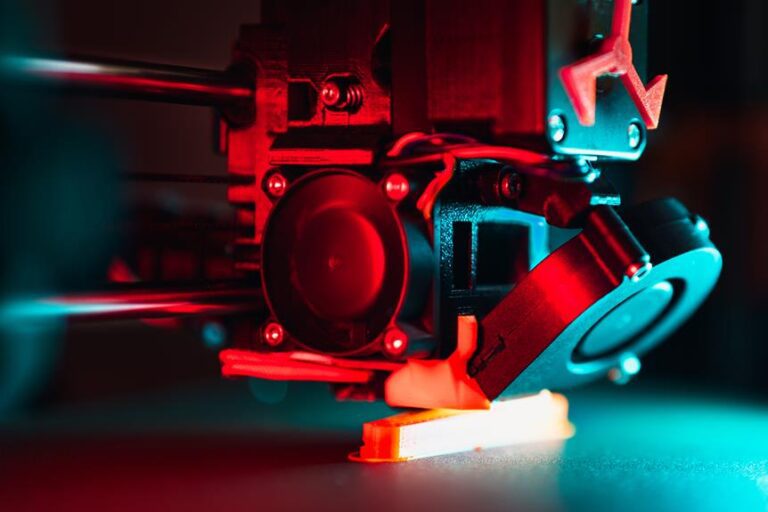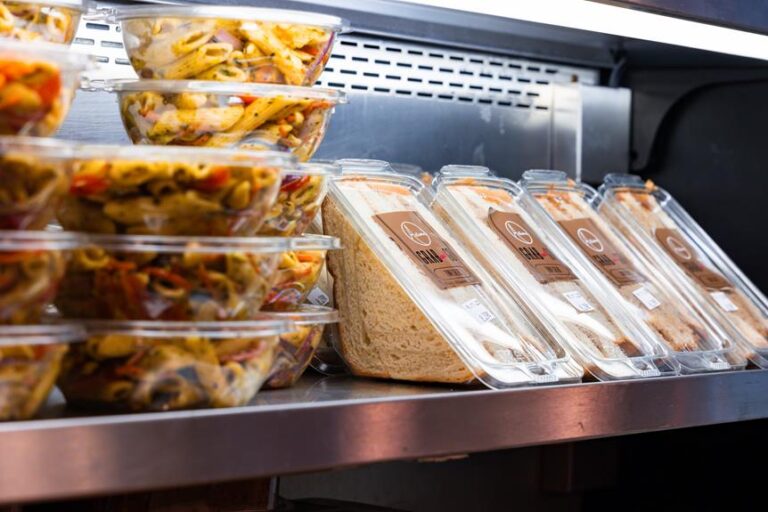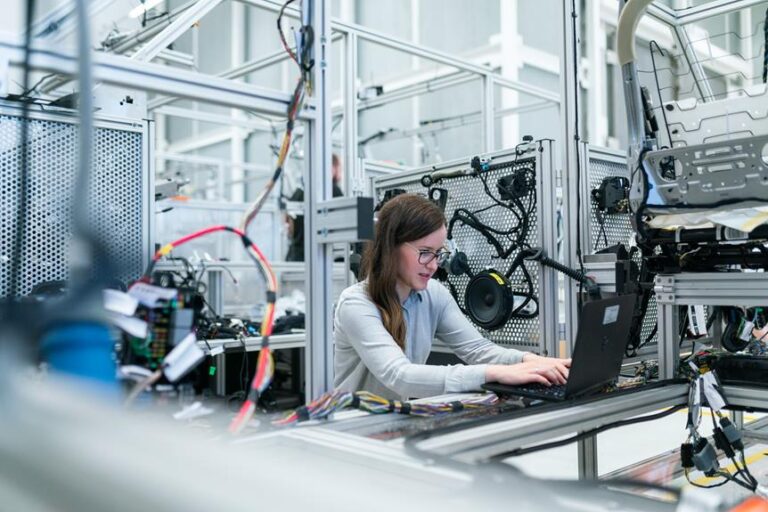SLA Vs. DLP 3D Printers: Choosing the Right Resin Printer
In the world of 3D printing, the choice between SLA and DLP resin printers can be likened to selecting the perfect tool from a vast toolbox. Each option offers unique capabilities and considerations that must be evaluated.
This article aims to shed light on the key differences between SLA and DLP 3D printers, weigh the pros and cons of each, and provide valuable insights for selecting the right resin printer for your specific projects.
Prepare to embark on a journey of informed decision-making in the realm of additive manufacturing.
Key Takeaways
- SLA printers use a laser to selectively cure liquid resin layer by layer, while DLP printers use a digital light projector to cure the resin.
- SLA printers produce higher resolution and more detailed prints compared to DLP printers, but DLP printers have faster print speeds.
- SLA printers offer a wider range of resin options, including specialized resins for specific applications, while DLP printers can handle a variety of materials, including standard resins, flexible resins, and engineering-grade resins.
- When choosing a resin printer, factors to consider include print speed, resolution, build volume, and cost.
Understanding SLA 3D Printers
The complexity of SLA 3D printers makes it essential to have a thorough understanding of their operation and capabilities. When comparing SLA vs. DLP 3D printers, it becomes evident that SLA printers use a laser to selectively cure liquid resin layer by layer, while DLP printers use a digital light projector to cure a whole layer at once. This fundamental difference in curing methods allows SLA printers to produce higher resolution and more detailed prints compared to DLP printers. SLA printers also offer a wider range of resin options, including specialized resins for specific applications such as dental and jewelry printing.
In terms of print speed, DLP printers have an advantage due to their ability to cure an entire layer in one pass. However, SLA printers are still capable of producing high-quality prints at a reasonable speed. Additionally, SLA printers tend to have larger build volumes, making them suitable for large-format printing.
Understanding the capabilities and limitations of SLA 3D printers is crucial when making a decision between SLA and DLP printers. Now, let's delve into exploring DLP 3D printers and their unique features and benefits.
Exploring DLP 3D Printers
When comparing SLA and DLP 3D printers, there are several key points to consider.
One important aspect is the print quality comparison between the two technologies, as this can greatly impact the final outcome of a 3D printed object.
Additionally, understanding the resin curing process in DLP printers is crucial, as it differs from the laser-based approach used in SLA printers.
Lastly, exploring the material compatibility options available for DLP printers is essential in order to determine which printer can meet specific project requirements.
Print Quality Comparison
As we delve into the print quality comparison of DLP 3D printers, it is important to consider the various factors that differentiate them from SLA printers.
DLP printers use a digital light projector to cure the resin layer by layer, resulting in faster print speeds compared to SLA printers. This faster curing process allows for higher resolution and finer details in the printed objects.
Additionally, DLP printers often have a larger build volume, allowing for the creation of larger prints. However, it is worth noting that DLP printers may produce prints with a slight stepping effect or visible pixelation due to the projection of a digital image.
Despite this, the overall print quality of DLP printers is still impressive and suitable for a wide range of applications.
Moving forward, let's explore the resin curing process in more detail.
Resin Curing Process
One important aspect to consider when exploring DLP 3D printers is the precise and controlled resin curing process they employ. Unlike SLA printers that use a laser to selectively cure each layer of resin, DLP printers utilize a light projector to cure an entire layer at once. This allows for faster print times and higher throughput.
The resin used in DLP printers is typically a photopolymer that solidifies when exposed to specific wavelengths of light. The light projector in DLP printers emits UV light, which triggers the polymerization process in the resin, resulting in a solid and stable 3D printed object.
The resin curing process in DLP printers ensures accurate and detailed prints, making them a popular choice for applications that require high precision and intricate designs.
Material Compatibility Options
The material compatibility options of DLP 3D printers provide users with a wide range of choices for their printing needs. DLP printers are known for their versatility in working with different types of resins. These printers can handle a variety of materials, including standard resins, flexible resins, and even engineering-grade resins.
This flexibility allows users to select the resin that best suits their specific project requirements. Standard resins are commonly used for general purpose printing, while flexible resins are ideal for producing objects that require flexibility or rubber-like properties. For more demanding applications, engineering-grade resins offer high strength, heat resistance, and durability.
With the wide material compatibility options available, DLP 3D printers provide users with the freedom to choose the most suitable resin for their desired outcomes.
Key Differences Between SLA and DLP 3D Printers
Several important differences exist between SLA and DLP 3D printers that can greatly impact the choice of the most suitable resin printer for a specific project.
One key difference is the light source used in the printing process. SLA printers utilize a laser beam to selectively cure the resin, while DLP printers use a digital projector to project an entire layer of the object onto the resin for curing. This difference in light source affects the resolution and speed of the printing process. SLA printers typically offer higher resolution and finer details due to the focused laser beam, but they can be slower compared to DLP printers, which can cure entire layers at once.
Another difference is the build platform. In SLA printers, the build platform moves up and down as each layer is cured, while in DLP printers, the build platform is stationary, and the entire layer is projected onto the resin. This difference affects the overall printing speed and complexity of the printer's mechanical components.
Additionally, the post-processing requirements differ between SLA and DLP printers. SLA prints usually require rinsing, curing, and sometimes additional support removal, whereas DLP prints usually require only minimal post-processing, such as support removal.
Considering these key differences, it is important to carefully evaluate the specific requirements of a project before choosing between an SLA or DLP printer to ensure the most suitable resin printer is selected.
Pros and Cons of SLA Resin Printers
When comparing SLA resin printers to other types of 3D printers, such as DLP printers, it is important to consider the pros and cons of SLA technology.
One key aspect to consider is the print quality comparison. SLA printers are known for their high level of detail and accuracy, making them ideal for applications that require intricate designs.
However, it is also important to consider the material cost considerations, as SLA resins tend to be more expensive compared to other printing materials.
Print Quality Comparison
SLA resin printers offer exceptional print quality, providing intricate details and smooth surfaces. When it comes to print quality comparison, SLA resin printers have several advantages:
- High level of detail: SLA printers can produce intricate designs and fine details with high precision, making them suitable for applications such as jewelry making and dental models.
- Smooth surface finish: SLA prints have a smooth surface finish, which is ideal for creating prototypes or finished products that require a polished appearance.
- Wide range of material options: SLA printers support a variety of resin materials, including flexible, transparent, and high-strength resins. This versatility allows users to choose the material that best suits their specific needs.
While SLA resin printers offer exceptional print quality, it is important to consider other factors such as cost, printing speed, and post-processing requirements before making a final decision.
Material Cost Considerations
One of the key factors to consider when evaluating the pros and cons of SLA resin printers is the cost of materials. SLA printers typically use a liquid resin that is cured by a light source, resulting in high-quality prints with fine detail. However, this high-quality output comes at a cost.
The resin used in SLA printers is generally more expensive compared to the filaments used in FDM printers. Additionally, the resin can be sensitive to environmental factors such as temperature and humidity, which may affect its shelf life and usability. Furthermore, the cost of post-processing materials, such as isopropyl alcohol for cleaning and UV curing chambers, should also be taken into account when considering the overall cost of using an SLA resin printer.
Despite the higher material cost, SLA printers can still be a worthwhile investment for those who prioritize print quality and intricate details in their 3D prints.
Pros and Cons of DLP Resin Printers
DLP resin printers offer several advantages and disadvantages that should be carefully considered before making a purchasing decision. Here are three key points to keep in mind:
- Faster Printing Speed: One of the main advantages of DLP resin printers is their fast printing speed. Unlike SLA printers that cure one layer at a time, DLP printers can cure an entire layer in one go, resulting in significantly reduced print times. This makes DLP printers a great choice for those who need quick turnaround times for their projects.
- Lower Resolution: While DLP printers excel in speed, they typically have a lower resolution compared to SLA printers. This means that the final prints may have slightly lower detail and surface finish. However, for many applications, the difference in resolution is negligible, and the faster printing speed outweighs this drawback.
- Limited Build Volume: Another point to consider is the limited build volume of DLP resin printers. Due to the nature of the technology, the build area is often smaller compared to other types of 3D printers. This may restrict the size of objects that can be printed, so it's important to assess if the build volume meets your specific needs.
Factors to Consider When Choosing a Resin Printer
Several important factors should be taken into account when selecting a resin printer for your specific needs. To help you make an informed decision, consider the following factors:
| Factor | Description |
|---|---|
| Print Speed | Determines how quickly the printer can produce objects. Faster print speed can be advantageous for large-scale production. |
| Resolution | Refers to the level of detail that can be achieved in the printed object. Higher resolution results in finer details and smoother surfaces. |
| Build Volume | Represents the maximum size of objects that can be printed. Consider the size of your desired prints to ensure they fit within the printer's build volume. |
| Cost | Includes the initial purchase price, maintenance costs, and material expenses. Evaluate your budget and the long-term affordability of the printer. |
Comparing Print Quality of SLA and DLP Resin Printers
How does the print quality of SLA and DLP resin printers compare?
When it comes to the print quality of SLA and DLP resin printers, there are several factors to consider. Here are three key points to help you understand the differences between the two technologies:
- Resolution: Both SLA and DLP printers are capable of producing high-resolution prints. However, SLA printers generally offer slightly better resolution due to their use of a laser or a high-resolution projector. This means that SLA printers can achieve finer details and smoother surfaces in their prints.
- Speed: DLP printers are known for their faster printing speeds compared to SLA printers. This is because DLP printers can cure an entire layer of resin at once, while SLA printers cure one point at a time. If speed is a priority for you, a DLP printer may be a better choice.
- Accuracy: SLA printers are typically more accurate than DLP printers. This is because SLA printers use a laser or a high-resolution projector to cure the resin, allowing for more precise control over the curing process. If you require highly accurate prints for your projects, an SLA printer may be the better option.
Selecting the Right Resin Printer for Your Projects
When considering which resin printer is the best fit for your projects, it is important to assess your specific needs and requirements. To help you make an informed decision, here is a comparison table of key features to consider when selecting between SLA and DLP 3D printers:
| Features | SLA Printers | DLP Printers |
|---|---|---|
| Print Speed | Generally slower | Faster |
| Resolution | High resolution | Lower resolution |
| Cost | Higher initial cost | Lower initial cost |
| Print Volume | Limited build size | Larger build size |
SLA printers offer high resolution prints, making them ideal for projects that require fine details. However, they tend to have slower printing speeds compared to DLP printers. On the other hand, DLP printers offer faster printing speeds but may sacrifice some resolution. Additionally, SLA printers typically have a higher initial cost, while DLP printers are more budget-friendly.
Another factor to consider is the print volume. SLA printers often have a limited build size, which may restrict the size of your projects. DLP printers, on the other hand, usually have a larger build size, allowing for larger prints.
Tips for Successful Resin Printing With SLA or DLP Technology
One essential tip for achieving successful resin printing with SLA or DLP technology is to carefully calibrate the printer settings for optimal print quality. Calibration involves adjusting various parameters such as exposure time, layer thickness, and print speed to ensure accurate and precise prints.
Here are three important tips for calibration and successful resin printing:
- Exposure Time: Experiment with different exposure times to find the ideal value for your resin. Too much exposure can lead to overcuring, resulting in brittle prints, while too little exposure can cause undercuring, leading to weak structures. It is crucial to find the right balance to achieve the desired strength and accuracy.
- Layer Thickness: Adjusting the layer thickness can significantly impact the print quality. Thinner layers produce finer details but may increase printing time, while thicker layers can reduce print time but sacrifice detail. Finding the optimal layer thickness that suits your specific project requirements is essential.
- Print Speed: Controlling the print speed can influence the success of resin printing. Slower print speeds allow for better resin penetration and curing, resulting in stronger prints with fewer artifacts. However, slower speeds can also increase print time. Finding the right balance between speed and quality is crucial to achieving successful resin prints.
Frequently Asked Questions
What Are Some Common Applications for SLA and DLP Resin Printers?
Some common applications for SLA and DLP resin printers include rapid prototyping, jewelry making, dental and medical models, and architectural models. These printers offer high precision and detail, making them suitable for intricate designs and small-scale production.
Can I Use Third-Party Resins With SLA and DLP Printers?
Yes, third-party resins can be used with both SLA and DLP printers. However, it is important to note that not all resins are compatible, and using a third-party resin may void the printer's warranty.
Are There Any Safety Concerns Associated With Resin Printing?
Resin printing, whether using SLA or DLP 3D printers, does come with certain safety concerns. These include exposure to potentially harmful fumes and the need to handle and dispose of resin properly to minimize health and environmental risks.
How Long Does It Typically Take to Print a Model Using SLA or DLP Technology?
The duration of printing a model using SLA or DLP technology varies depending on factors such as the complexity of the model, the resolution settings, and the size of the model.
What Are the Maintenance Requirements for SLA and DLP Resin Printers?
Maintenance requirements for SLA and DLP resin printers include cleaning the print chamber, replacing resin tanks and build platforms, calibrating the machine, and ensuring proper ventilation. Regular maintenance is crucial to ensure optimal performance and print quality.
Conclusion
In conclusion, when choosing between SLA and DLP 3D printers, it is important to consider the specific requirements of your projects.
SLA printers offer high precision and smooth surface finishes.
On the other hand, DLP printers provide faster printing speeds.
Both technologies have their pros and cons, so it is crucial to weigh them against your needs.
Remember the adage, 'Choose the right tool for the job,' as it reminds us to carefully evaluate our options and select the most suitable resin printer for our specific applications.









